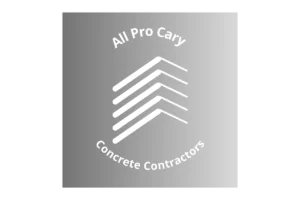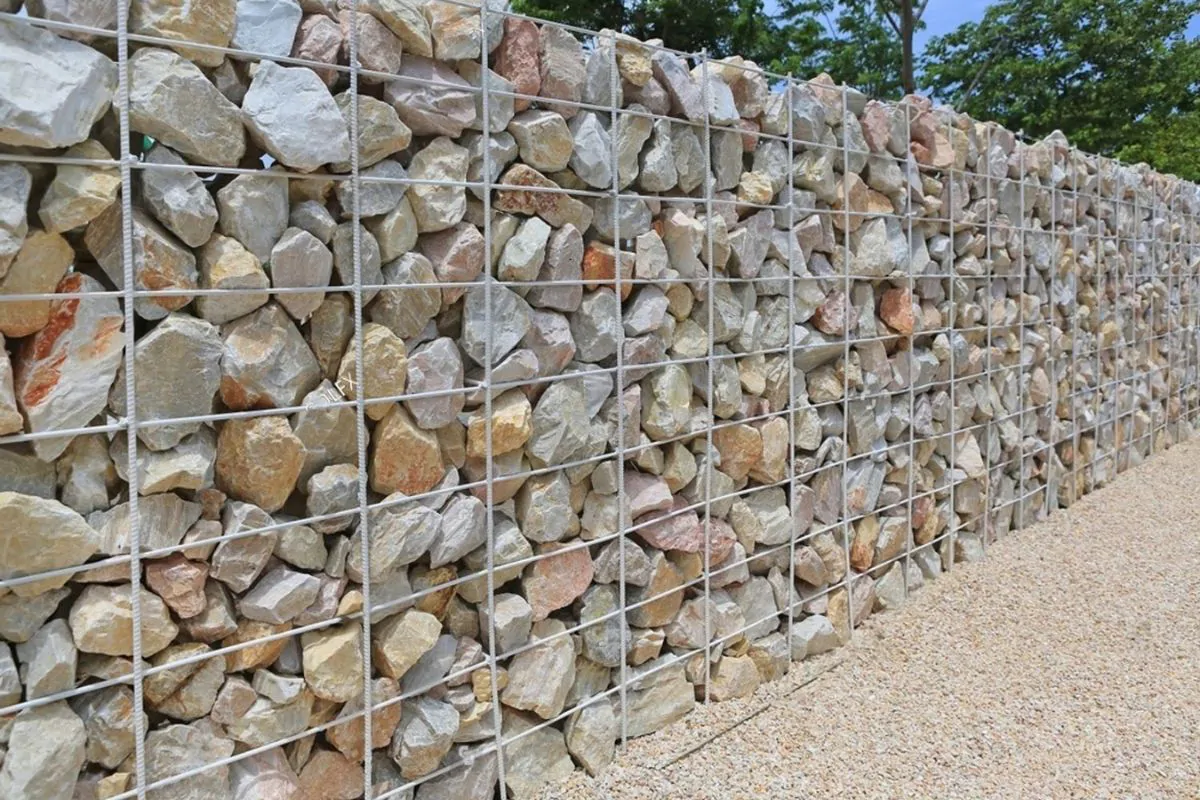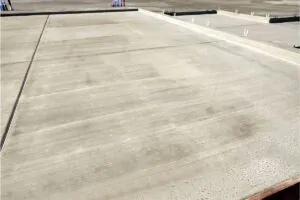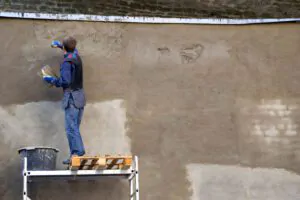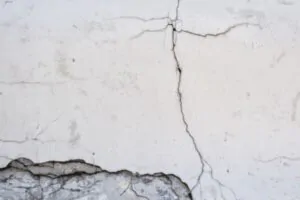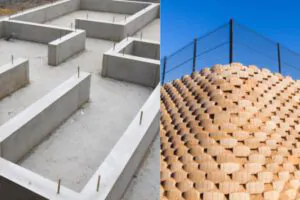
Retaining walls come in many forms, but few possess the enduring charm and resilience of rip rap concrete. Picture this: a landscape transformed, not merely by functional barriers, but by structures that breathe life into outdoor spaces. Rip rap concrete retaining walls stand as silent sentinels, guarding against erosion while etching their presence into the natural tapestry of your surroundings.
In this comprehensive guide, we take a deep dive into the territory of rip rap concrete, uncovering its secrets and the myriad possibilities it offers. Whether you’re a homeowner yearning for stability in your backyard terrain or a landscaping enthusiast with an eye for innovation, this article is your gateway to understanding the art and science of rip rap concrete retaining walls.
What are Rip Rap Concrete Retaining Walls?
Rip rap concrete retaining walls, also known as rip rap walls, are robust structures designed to stabilize slopes, control erosion, and provide structural support in various landscaping and construction projects. Composed of a combination of concrete blocks or poured concrete and natural stone, these walls offer a blend of durability and aesthetic appeal that makes them popular choices for both residential and commercial applications.

Pros and Cons of Using Rip Rap Retaining Walls
To give you more information on rip rap retaining walls, here are some pros and cons you can weigh in on:
Pros:
- Durability: Rip rap concrete walls are highly durable and can withstand harsh weather conditions, erosion, and other environmental stresses.
- Aesthetic Appeal: The combination of concrete and natural stone lends a rustic and visually appealing charm to outdoor spaces.
- Erosion Control: These walls effectively prevent soil erosion and help maintain the integrity of the landscape.
- Versatility: Rip rap walls can be customized to suit various terrains and design preferences, making them adaptable to different settings.
- Low Maintenance: Once installed, rip rap concrete walls require minimal maintenance, saving both time and resources in the long run.
Cons:
- Cost: The initial cost of installing rip rap concrete walls can be higher compared to some other retaining wall options.
- Installation Complexity: Depending on the terrain and design requirements, the installation of rip rap walls may require specialized equipment and skilled labor.
- Permit Requirements: In some areas, obtaining permits for the construction of rip rap walls may be necessary, adding to the overall project timeline and cost.
Impact on Property and Surrounding Areas
Rip rap concrete retaining walls can have significant positive impacts on both the property and its surrounding areas:
- Stability: By stabilizing slopes and preventing soil erosion, rip rap walls contribute to the overall stability of the property.
- Aesthetic Enhancement: The natural beauty of the stone combined with the functionality of the walls enhances the visual appeal of the landscape, increasing property value.
- Erosion Control: Rip rap walls help mitigate the negative effects of erosion, protecting nearby water bodies and preserving the integrity of the environment.
Best Practices for Installation and Maintenance
Installing and maintaining rip rap concrete retaining walls requires careful attention to detail and adherence to best practices:
- Site Preparation: Proper site preparation, including grading and soil compaction, is essential for ensuring the stability and longevity of the walls.
- Quality Materials: Using high-quality materials, including durable concrete and natural stone, is crucial for achieving optimal results.
- Professional Installation: Hiring experienced professionals with expertise in rip rap wall construction ensures proper installation and long-term performance.
- Regular Inspection and Maintenance: Periodic inspections and maintenance activities, such as checking for signs of erosion, repairing any damage, and clearing debris, help extend the lifespan of rip rap concrete retaining walls.
Benefits of Using Rip Rap Concrete Walls
Rip rap concrete walls offer a myriad of benefits that extend beyond mere structural support, making them a popular choice for various landscaping and construction projects.
Improved Flood Control
One of the primary advantages of rip rap concrete walls is their effectiveness in flood control. By providing a solid barrier against rushing waters, these walls help prevent soil erosion and mitigate the risk of flooding in vulnerable areas. The use of rip rap rock in the construction of these walls further enhances their ability to withstand the force of flowing water, making them an ideal solution for shoreline protection and flood-prone regions. Whether along riverbanks, coastal areas, or stormwater management systems, rip rap concrete walls play a crucial role in safeguarding properties and communities against the destructive forces of flooding.
Enhanced Appearance
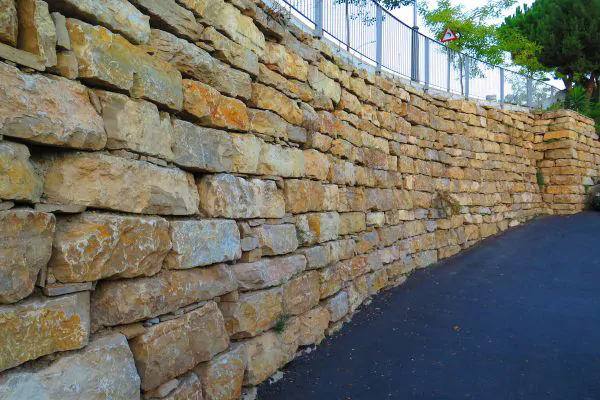
Beyond their practical utility, rip rap concrete walls also contribute to the aesthetic enhancement of outdoor spaces. The combination of durable concrete blocks or poured concrete with natural stone creates a visually appealing contrast that adds character and charm to landscapes. With their rustic elegance and timeless appeal, rip rap concrete walls serve as focal points that enhance the visual interest and curb appeal of any landscape.
Increased Usable Space
Another notable benefit of rip rap concrete walls is the creation of additional usable space within outdoor environments. Their versatility and adaptability make them invaluable assets for property owners seeking to optimize the layout and usability of their landscapes while maximizing their enjoyment of outdoor living.
Reduced Maintenance
Unlike traditional retaining walls that may deteriorate over time and require frequent repairs or replacements, rip rap concrete walls are inherently durable and resistant to weathering, erosion, and other environmental stresses. The use of rip rap rock in the construction further enhances longevity and stability, minimizing the need for ongoing maintenance interventions.
Types of Rip Rap
Rip rap, a crucial component in the construction of retaining walls, comes in various types, each suited for specific purposes and environmental conditions. Understanding the different types of rip rap is essential for selecting the most suitable option for your retaining wall project.
Type A
Type A rip rap consists of large, heavy stones that provide robust protection against erosion and hydraulic forces. These stones, typically ranging in size from 1 to 3 feet in diameter, are ideal for use in high-flow areas such as riverbanks, shorelines, and stormwater channels. Type A rip rap offers excellent stability and durability, making it an effective solution for protecting vulnerable landscapes and infrastructure from the erosive effects of water.
Type B
Type B rip rap comprises smaller stones than Type A, typically ranging from 6 to 18 inches in diameter. These stones are more compact and tightly packed, offering effective erosion control in moderate-flow environments such as creek banks, culverts, and drainage ditches. Type B rip rap provides a balance between stability and permeability, allowing for adequate water drainage while still offering sufficient protection against soil erosion and scouring.
Type C
Type C rip rap consists of even smaller stones, typically ranging from 4 to 10 inches in diameter. These stones are commonly used in low-flow areas such as swales, ditch linings, and embankments where erosion control is necessary, but the hydraulic forces are minimal. Type C rip rap offers good permeability and erosion resistance while also providing aesthetic benefits, making it suitable for landscaping applications where visual appeal is important.
Type D
Type D rip rap comprises the smallest stones, typically ranging from 2 to 6 inches in diameter. These stones are often used in decorative landscaping features such as dry creek beds, garden borders, and accent walls. While Type D rip rap may not offer the same level of erosion control as larger types, it still provides effective stabilization in low-flow environments and adds texture and visual interest to outdoor spaces.
Tips for Designing a Rip Rap Retaining Wall
Designing a rip rap retaining wall requires careful consideration of several factors to ensure structural integrity, functionality, and aesthetic appeal. Here are some essential tips to guide you through the design process.
Selecting the Location
Choose a location for your rip rap retaining wall that addresses the specific needs of your landscape, such as erosion control, slope stabilization, or property delineation. Consider factors such as soil composition, water drainage patterns, and existing vegetation to determine the most suitable placement for your wall.
Determining Height and Structural Needs
Evaluate the height and structural requirements of your rip rap retaining wall based on the topography and soil conditions of your site. Determine whether a gravity wall or reinforced wall is necessary to withstand the lateral pressure of the soil and any additional loads. Consult with a structural engineer or experienced contractor to ensure the design meets safety standards and local building codes.
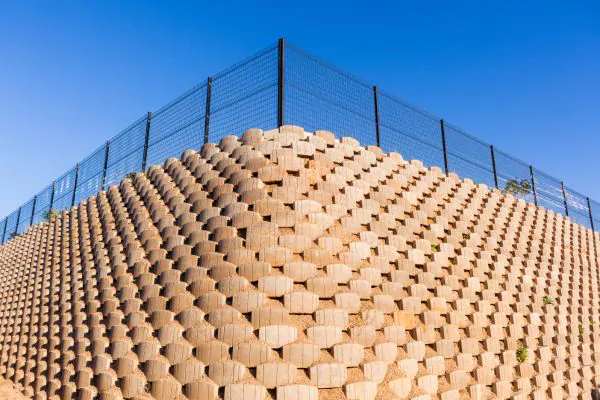
Calculating the Total Structure Required
Calculate the total amount of rip rap material needed for your retaining wall based on the dimensions and design specifications. Consider factors such as wall height, length, and thickness to estimate the volume of rip rap rock required. Account for any additional features, such as drainage systems or geotextile fabric, that may affect the overall material requirements.
Choosing the Right Concrete Contractor
Selecting the Professional concrete contractor is essential for the successful design and construction of your rip rap retaining wall. Look for contractors with experience in building retaining walls and working with rip rap materials. Verify their credentials, reputation, and past projects to ensure they have the expertise and resources to deliver quality results. Obtain multiple quotes and compare services before making a final decision to ensure you find the best concrete contractor for your project.
Conclusion
In conclusion, rip rap concrete retaining walls stand as stalwart guardians of landscapes, offering a harmonious blend of strength, functionality, and aesthetic appeal. From their ability to control erosion and provide flood protection to their capacity for enhancing the visual appeal of outdoor spaces, rip rap walls are indispensable elements in landscaping and construction projects.
Whether perched along riverbanks, adorning garden terraces, or fortifying coastal properties, rip rap walls stand as enduring symbols of resilience, protecting our natural heritage while enriching the tapestry of our outdoor living spaces.
